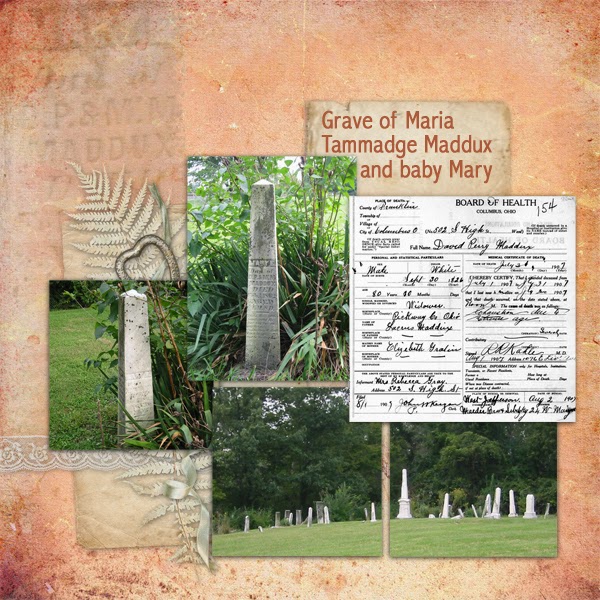140 Years Ago, Winchester, Illinois
In the Scott County Circuit Court, October Term, A.D. 1874
The People of Illinois vs
Lewis Maddox and Wm Maddox etal
Indict. for Murder
Oct 30th. Jury sworn to try issue, against Lewis Maddox, defendant arraigned and pleads not guilty.
Murder at Mauvaisterre Creek
How did an ordinary farmer come to kill his father, have his name splashed on newspapers all over the midwestern United States and fuel family legends that persist to this day? Did the jury make the right decision? There are no surviving transcripts of the trial, but we can read the evidence presented to the grand jury.
As we meet each family member over the next few months, bear in mind that there is a family history of alcoholism, especially in the 19th century. Our Native American heritage left our ancestors unable to metabolize alcohol. My great-grandmother, niece of Lewis, claimed to have one-eighth Native American blood. That would have made Lewis one-quarter and his father, the victim, as much as one-half. There is no proof to date of these claims; however, the oral tradition lives on in several diverse branches of the Maddox family.
Meet the Killer
Lewis (Louis) Maddox was born in Pickaway County, Ohio, in December, 1846, to William Maddox and Nancy Jane Webb. His oldest brother, John, had died as a toddler. The next oldest brother was David and several siblings followed Lewis. This birth order made Lewis a middle child, while the death of John left behind the enduring promise of a perfect child that his living siblings could never achieve.
In about 1853, the family moved to Scott County, Illinois, living on a 270-acre farm adjoining a deep bend of Mauvaisterre Creek. Lewis worked on the farm and attended school, according to the 1860 census.
As a middle child, Lewis likely would have lived and died an obscure farmer, if not for the Civil War. When his older brother David enlisted at age 19, Lewis tagged along. He claimed his age as 18, though in the summer of 1862, he would have been only 15. If his birth was actually in 1845, which is possible, he would have been 16. Nonetheless, he was underage. Did he want the enlistment bounty money, the excitement of war or just to escape the drudgery of the farm?
The muster roll for Company F, 129th Illinois Infantry, shows that Lewis was 5 foot 6 inches, with black eyes, dark hair and a dark complexion. Later documentation shows him as taller, so he had not yet had his final growth spurt. No man is ever prepared for the horrors of war, but a 15-year-old is even less so.
The 129th served first in Kentucky and Tennessee, engaging in skirmishes and protecting the railroad. Lewis was medically discharged on July 22, 1863, having served less than one year. He had chronic diarrhea, likely dysentery, which was the most common disease suffered by troops on both sides of the conflict. He also claimed to have fallen from a railroad trestle onto rocks, injuring himself internally. He was sent to a hospital in Gallatin, Tennessee, where he was observed having convulsions on a daily basis. Did he suffer a concussion? He was discharged from the Army with a certificate of disability.
Lewis returned home to heal, then enlisted in Company B, 133rd Illinois Infantry, for a period of 100 days in 1864. That time was spent guarding prisoners at Rock Island, Illinois. David, staying with the 129th, marched south with General Sherman's Army as it swept through the South, burning Atlanta and making the march to the sea and Savannah, Georgia.
David died during or shortly after the war. With David's death, Lewis moved from a middle child to become the eldest of four brothers. I think that he was uncomfortable with being in the leadership role. He seemed to be a follower, rather than a leader.
Lewis and his next youngest brother, William H. Maddox, together leased land from their father and began farming for themselves. Lewis applied for a marriage license with Melissa Boss on September 14, 1867. There is no indication that this license was used.
Lewis married Ellen Taylor on September 22, 1869, and their brief union was blessed with one son. John Alexander Maddox was born on July 18, 1870. His mother died while he was young.
Lewis and his father argued often about partitioning the farm. Lewis and young William wanted their birthright. William the elder did not agree. Fueled by alcohol, their arguments turned bitter on the day of the shooting.
The rest of Lewis' story will be told only after the evidence is presented. Lewis Maddox died in 1915 and is buried in a remote cemetery in Brown County, Illinois, with a military marker.
 |
| Quick drop page from Recollection by Joanne Brisebois Designs for Digital Scrapper, 2011 |




